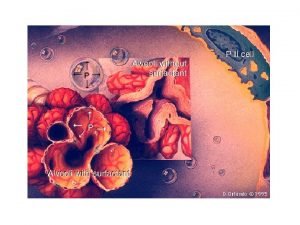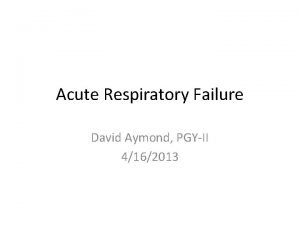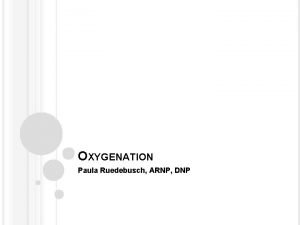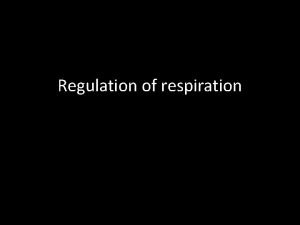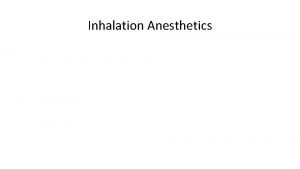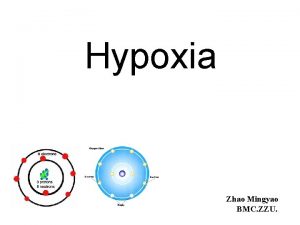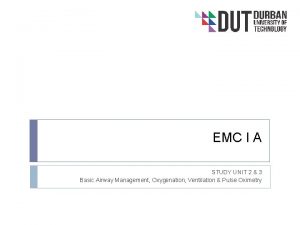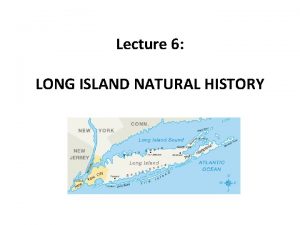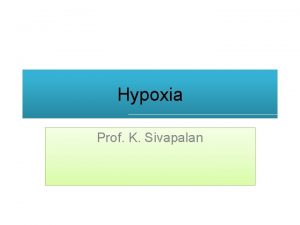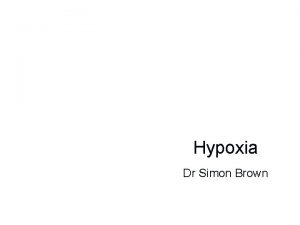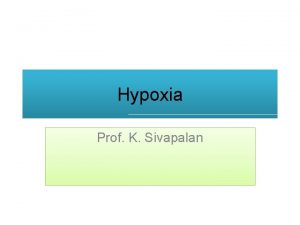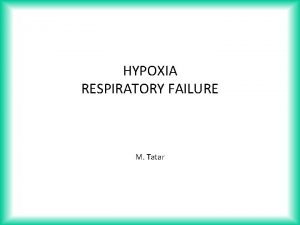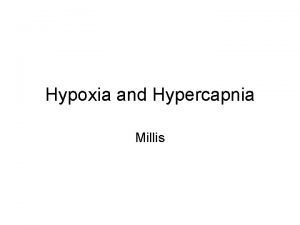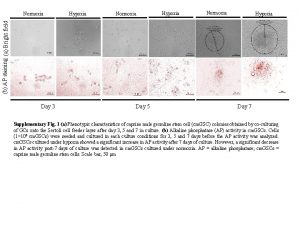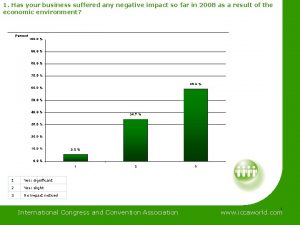Long Island Sound has suffered from hypoxia for




























- Slides: 28

Long Island Sound has suffered from hypoxia for decades: • Result of Global Warming? • Eutrophication? • It has always been like this…. . .

EAST LIS WEST LIS NARROWS CENTRAL LIS


Sampling mud

Design “proxies” for paleoenvironmental research such as • Salinity • Temperature • Faunal/floral characteristics • Oxygen saturation • Metals • Sewage Calibrate proxies for these parameters on the modern LIS environment

137 Cs Chestnut blight 210 Pb Onset of hatting industry Ragweed pollen 14 C

137 CS HG 14 C


MEASURES OF ORGANIC PRODUCTIVITY: • BURIAL RATE OF ORGANIC CARBON • BURIAL RATE OF DIATOM “SKELETONS” (BIOGENIC SILICA) • PRODUCTION RATE OF HETEROTROPHS LIKE FORAMINIFERA

Corg, %



Elphidium excavatum


The d 13 C values in foram “shells” are related to mixing of sea and river water (salinity) and to addition of “light carbon” from photosynthetic productivity

Estimate d 13 C variability not related to mixing of sea and river water (d 13 C*) • • Measure d 18 O values in foraminiferal shells Calculate d 18 O of water using BWT Estimate salinity from LIS mixing model Estimate d 13 C of dissolved inorganic carbonate using the LIS mixing model • Subtract calculated - observed values: d 13 C * = d 13 Ccarbonate - d 13 Ccalculated in water





Core data

% organic Carbon and d 13 C* CORE A 1 C 1 Year AD

The d 13 C* value indicates the amount of oxidized Corg that was added to the bottom water column. The d 13 C* value serves as an indirect proxy for OCI or Oxygen Consumption Index (Level of Paleo Oxygenation)




CONCLUSIONS (1) • Major environmental changes in the early 1800’s: • Increased Corg and Bsi storage • Isotopically lighter carbon, lower O 2 levels in bottom waters, sewage indicators, and metal pollutants • Increased productivity of benthic foraminifera

CONCLUSIONS (2) • Hypoxic events may have occurred since the early 1800’s but were absent before that time. They are severe in the late 20 th century. Why? – Enhanced productivity==> more Corg productivity – Modern global warming==> higher rate of Corg decompositon and increased water stratification HYPOXIA NEED A COMBINATION OF HIGH BWT AND HIGH Corg LOADING
 Hypoxemia vs hypoxia
Hypoxemia vs hypoxia Shunting vs vq mismatch
Shunting vs vq mismatch Intrapleural pressure vs intrapulmonary pressure
Intrapleural pressure vs intrapulmonary pressure Baltic sea hypoxia
Baltic sea hypoxia Koponyavégű fekvés
Koponyavégű fekvés Haemoglobin
Haemoglobin Diffusion hypoxia slideshare
Diffusion hypoxia slideshare Diffusion hypoxia slideshare
Diffusion hypoxia slideshare Hemoglobina
Hemoglobina Hypoxic hypoxia
Hypoxic hypoxia Short short short long long long short short short
Short short short long long long short short short Once upon a time there lived an ant and a butterfly
Once upon a time there lived an ant and a butterfly Which aging empires suffered from nationalism
Which aging empires suffered from nationalism A or an island
A or an island Ellis island and angel island differences
Ellis island and angel island differences Ellis island and angel island venn diagram
Ellis island and angel island venn diagram Island of the blue dolphins map
Island of the blue dolphins map Study island sound
Study island sound West egg east egg
West egg east egg Long island mar thoma church
Long island mar thoma church Long island housing services
Long island housing services Ultimate soccer training long island
Ultimate soccer training long island Long island terminal moraine
Long island terminal moraine Lollipop farm
Lollipop farm Neuro linguistic programming long island
Neuro linguistic programming long island Ambulette service long island
Ambulette service long island Can you touch dry ice
Can you touch dry ice Walt whitman house long island
Walt whitman house long island Agritourism long island
Agritourism long island
